Alberta
Malign Neglect: What Calgary’s Water-Main Break Reveals about the Failure of City Government
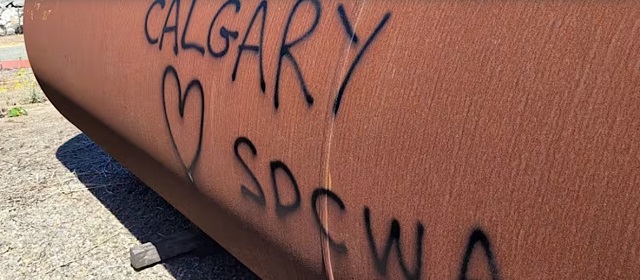
Alberta
Alberta Emergency Alert test – Wednesday at 1:55 PM

Minister of Public Safety and Emergency Services Mike Ellis issued the following statement on the upcoming Alberta Emergency Alert test:
“On Nov. 19, 2025, Alberta will take part in a scheduled test of the National Public Alerting System. At 1:55 p.m., an Alberta Emergency Alert test will be issued across multiple channels including television, radio, wireless devices, websites, social media, the Alberta Emergency Alert mobile app and directly to compatible cellphones across the province.
“While alert interruptions can be inconvenient, these tests are essential. They help us identify and resolve technical issues, ensuring the system functions properly when it matters most. Regular testing, typically held in May and November, is a key part of keeping Albertans informed during real emergencies such as tornadoes, wildfires, floods and Amber Alerts.
“To stay connected, I urge all Albertans to download the Alberta Emergency Alert app, which delivers critical warnings directly to your phone. To receive alerts, your mobile device must be compatible, connected to an LTE 4G network or higher, or connected to Wi-Fi with the app installed. If your phone is on silent, the alert will still appear but may not produce sound.
“This test is also a valuable opportunity to talk with your household, friends and coworkers about emergency preparedness. Questions to ask:
- Do you have an emergency kit with enough supplies for at least 72 hours?
- Have you included essentials like water, non-perishable food, flashlights, batteries and a first aid kit?
- Do you have copies of important documents and a list of emergency contacts?
- Is your kit stored in an easy-to-access location and does everyone know where it is?
“Preparedness doesn’t have to be complicated. Simple steps like having an emergency plan and essential supplies can make a big difference to protect yourself and your household.”
Related information
Alberta
Carney government’s anti-oil sentiment no longer in doubt
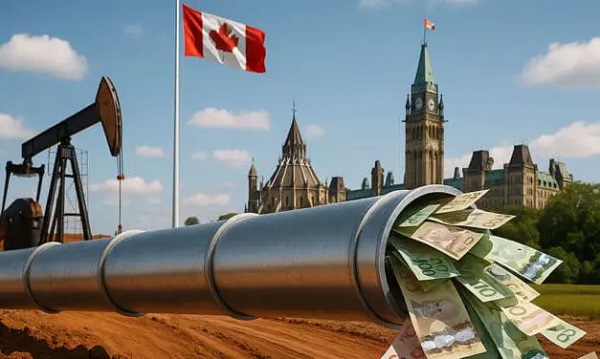
From the Fraser Institute
The Carney government, which on Monday survived a confidence vote in Parliament by the skin of its teeth, recently released a “second tranche of nation-building projects” blessed by the Major Projects Office. To have a chance to survive Canada’s otherwise oppressive regulatory gauntlet, projects must get on this Caesar-like-thumbs-up-thumbs-down list.
The first tranche of major projects released in September included no new oil pipelines but pertained largely to natural gas, nuclear power, mineral production, etc. The absence of proposed oil pipelines was not surprising, as Ottawa’s regulatory barricade on oil production means no sane private company would propose such a project. (The first tranche carries a price tag of $60 billion in government/private-sector spending.)
Now, the second tranche of projects also includes not a whiff of support for oil production, transport and export to non-U.S. markets. Again, not surprising as the prime minister has done nothing to lift the existing regulatory blockade on oil transport out of Alberta.
So, what’s on the latest list?
There’s a “conservation corridor” for British Columbia and Yukon; more LNG projects (both in B.C.); more mineral projects (nickel, graphite, tungsten—all electric vehicle battery constituents); and still more transmission for “clean energy”—again, mostly in B.C. And Nunavut comes out ahead with a new hydro project to power Iqaluit. (The second tranche carries a price tag of $58 billion in government/private-sector spending.)
No doubt many of these projects are worthy endeavours that shouldn’t require the imprimatur of the “Major Projects Office” to see the light of day, and merit development in the old-fashioned Canadian process where private-sector firms propose a project to Canada’s environmental regulators, get necessary and sufficient safety approval, and then build things.
However, new pipeline projects from Alberta would also easily stand on their own feet in that older regulatory regime based on necessary and sufficient safety approval, without the Carney government additionally deciding what is—or is not—important to the government, as opposed to the market, and without provincial governments and First Nations erecting endless barriers.
Regardless of how you value the various projects on the first two tranches, the second tranche makes it crystal clear (if it wasn’t already) that the Carney government will follow (or double down) on the Trudeau government’s plan to constrain oil production in Canada, particularly products derived from Alberta’s oilsands. There’s nary a mention that these products even exist in the government’s latest announcement, despite the fact that the oilsands are the world’s fourth-largest proven reserve of oil. This comes on the heels on the Carney government’s first proposed budget, which also reified the government’s fixation to extinguish greenhouse gas emissions in Canada, continue on the path to “net-zero 2050” and retain Canada’s all-EV new car future beginning in 2036.
It’s clear, at this point, that the Carney government is committed to the policies of the previous Liberal government, has little interest in harnessing the economic value of Canada’s oil holdings nor the potential global influence Canada might exert by exporting its oil products to Asia, Europe and other points abroad. This policy fixation will come at a significant cost to future generations of Canadians.
-
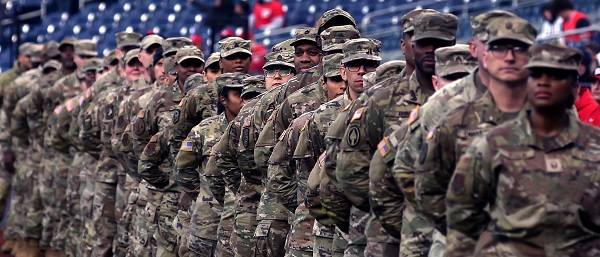
 Daily Caller16 hours ago
Daily Caller16 hours agoDemocrats Explicitly Tell Spy Agencies, Military To Disobey Trump
-

 Agriculture2 days ago
Agriculture2 days agoFederal cabinet calls for Canadian bank used primarily by white farmers to be more diverse
-
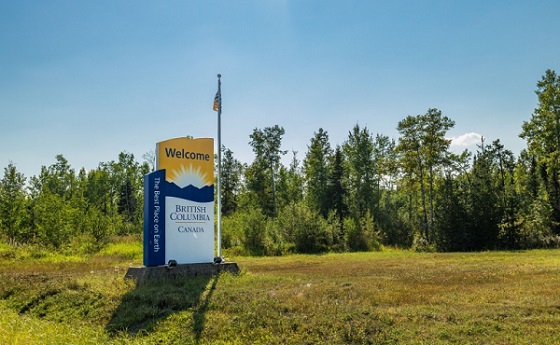
 Indigenous17 hours ago
Indigenous17 hours agoTop constitutional lawyer slams Indigenous land ruling as threat to Canadian property rights
-

 Daily Caller2 days ago
Daily Caller2 days ago‘Holy Sh*t!’: Podcaster Aghast As Charlie Kirk’s Security Leader Reads Texts He Allegedly Sent University Police
-

 Uncategorized1 day ago
Uncategorized1 day agoCost of bureaucracy balloons 80 per cent in 10 years: Public Accounts
-
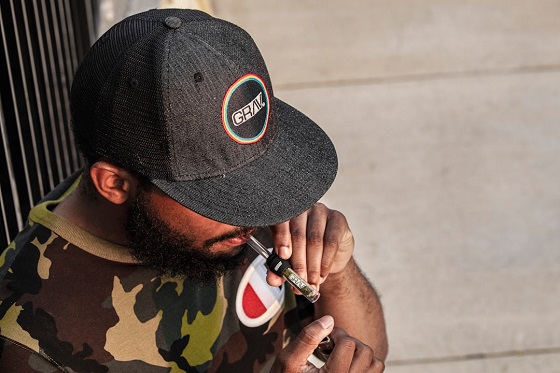
 Addictions1 day ago
Addictions1 day agoActivists Claim Dealers Can Fix Canada’s Drug Problem
-

 Alberta1 day ago
Alberta1 day agoEdmonton and Red Deer to Host 2027 IIHF World Junior Hockey Championship
-

 Business23 hours ago
Business23 hours agoClimate Climbdown: Sacrificing the Canadian Economy for Net-Zero Goals Others Are Abandoning


 Mission failure: The rupture of Calgary’s high-pressure water main on June 5 flooded 16th Avenue and threatened the city’s water supply; repairs were halted for a day after two workers were injured, an excess of caution that led to anger and frustration over the city’s basic competence. (Sources of photos: (top)
Mission failure: The rupture of Calgary’s high-pressure water main on June 5 flooded 16th Avenue and threatened the city’s water supply; repairs were halted for a day after two workers were injured, an excess of caution that led to anger and frustration over the city’s basic competence. (Sources of photos: (top)  Built in 1975, the Bearspaw South feeder main draws from the Bearspaw Water Treatment Facility on the Bow River (bottom) and supplies 60 percent of Calgary’s drinking water. (Sources of photos: (top)
Built in 1975, the Bearspaw South feeder main draws from the Bearspaw Water Treatment Facility on the Bow River (bottom) and supplies 60 percent of Calgary’s drinking water. (Sources of photos: (top)  A story full of holes: City officials said the water main had been inspected and tested regularly, and that no leaks had been found; experts pointed out a catastrophic breakage of the line’s multi-layered structure would not likely begin with small leaks – and it emerged the line had not actually been drained and inspected since 2007. (Sources: (left photo)
A story full of holes: City officials said the water main had been inspected and tested regularly, and that no leaks had been found; experts pointed out a catastrophic breakage of the line’s multi-layered structure would not likely begin with small leaks – and it emerged the line had not actually been drained and inspected since 2007. (Sources: (left photo)  Pointing fingers: Calgary mayor Jyoti Gondek blamed Alberta’s UCP government for denying Calgary the money for maintenance and repairs; however, Calgary had never asked for such funding, and in any case received $224 million this year to allocate as it pleased. (Source of screenshot:
Pointing fingers: Calgary mayor Jyoti Gondek blamed Alberta’s UCP government for denying Calgary the money for maintenance and repairs; however, Calgary had never asked for such funding, and in any case received $224 million this year to allocate as it pleased. (Source of screenshot:  Core failures: As in many Western cities, Calgary’s leadership refuses to focus on the basic responsibilities of municipal government, like fixing potholes, clearing snow or ensuring public transit is safe and effective; it prefers building bike lanes people don’t use and planning the next multi-billion-dollar transit line. (Sources of photos (clockwise starting top left):
Core failures: As in many Western cities, Calgary’s leadership refuses to focus on the basic responsibilities of municipal government, like fixing potholes, clearing snow or ensuring public transit is safe and effective; it prefers building bike lanes people don’t use and planning the next multi-billion-dollar transit line. (Sources of photos (clockwise starting top left):  Crisis of competence: Experienced technical specialists, managers and tradesman have been leaving or getting purged from organizations that prioritize conformity to progressive causes like ESG and wokism over the nuts and bolts of keeping systems running. At bottom, engineer James Buker, a retired city waterworks employee. (Source of bottom photo:
Crisis of competence: Experienced technical specialists, managers and tradesman have been leaving or getting purged from organizations that prioritize conformity to progressive causes like ESG and wokism over the nuts and bolts of keeping systems running. At bottom, engineer James Buker, a retired city waterworks employee. (Source of bottom photo:  Hectoring and lecturing: When the state of emergency was declared, local media focussed increasingly citizens’ compliance with water restrictions; the mayor lectured Calgarians on the need to “dig in and do a little bit more”. Shown at bottom, people filling their water jugs at the city’s emergency supply trailer. (Sources of photos: (top)
Hectoring and lecturing: When the state of emergency was declared, local media focussed increasingly citizens’ compliance with water restrictions; the mayor lectured Calgarians on the need to “dig in and do a little bit more”. Shown at bottom, people filling their water jugs at the city’s emergency supply trailer. (Sources of photos: (top)  Water, water everywhere: The clampdown was based on a fear the city would not have enough water to fight a single major fire, this in a city posting daily water surpluses of 100 million litres, with two rivers (including the Bow River shown at top), two large reservoirs (including the Glenmore Reservoir shown at bottom) and multiple small water bodies to draw from.
Water, water everywhere: The clampdown was based on a fear the city would not have enough water to fight a single major fire, this in a city posting daily water surpluses of 100 million litres, with two rivers (including the Bow River shown at top), two large reservoirs (including the Glenmore Reservoir shown at bottom) and multiple small water bodies to draw from. They don’t make ‘em like they used to: The water main break forced the city to rely on the 92-year-old Glenmore Water Treatment Plant (right), built on the north side of the Glenmore Reservoir (left), an engineering marvel of its era.
They don’t make ‘em like they used to: The water main break forced the city to rely on the 92-year-old Glenmore Water Treatment Plant (right), built on the north side of the Glenmore Reservoir (left), an engineering marvel of its era. “Logic clearly dictates that the needs of the many outweigh the needs of the few,” said Star Trek’s Mr. Spock (left); the same progressives who used to nod in agreement to that line seemed more worried about two injured workers than the mission to repair infrastructure critical to 1.6 million Calgarians. Shown at right, a Japanese kamikaze pilot in a damaged single-engine bomber over the U.S. Aircraft Carrier USS Essex, off the Philippine Islands, November 1944. (Source of right photo:
“Logic clearly dictates that the needs of the many outweigh the needs of the few,” said Star Trek’s Mr. Spock (left); the same progressives who used to nod in agreement to that line seemed more worried about two injured workers than the mission to repair infrastructure critical to 1.6 million Calgarians. Shown at right, a Japanese kamikaze pilot in a damaged single-engine bomber over the U.S. Aircraft Carrier USS Essex, off the Philippine Islands, November 1944. (Source of right photo: 







